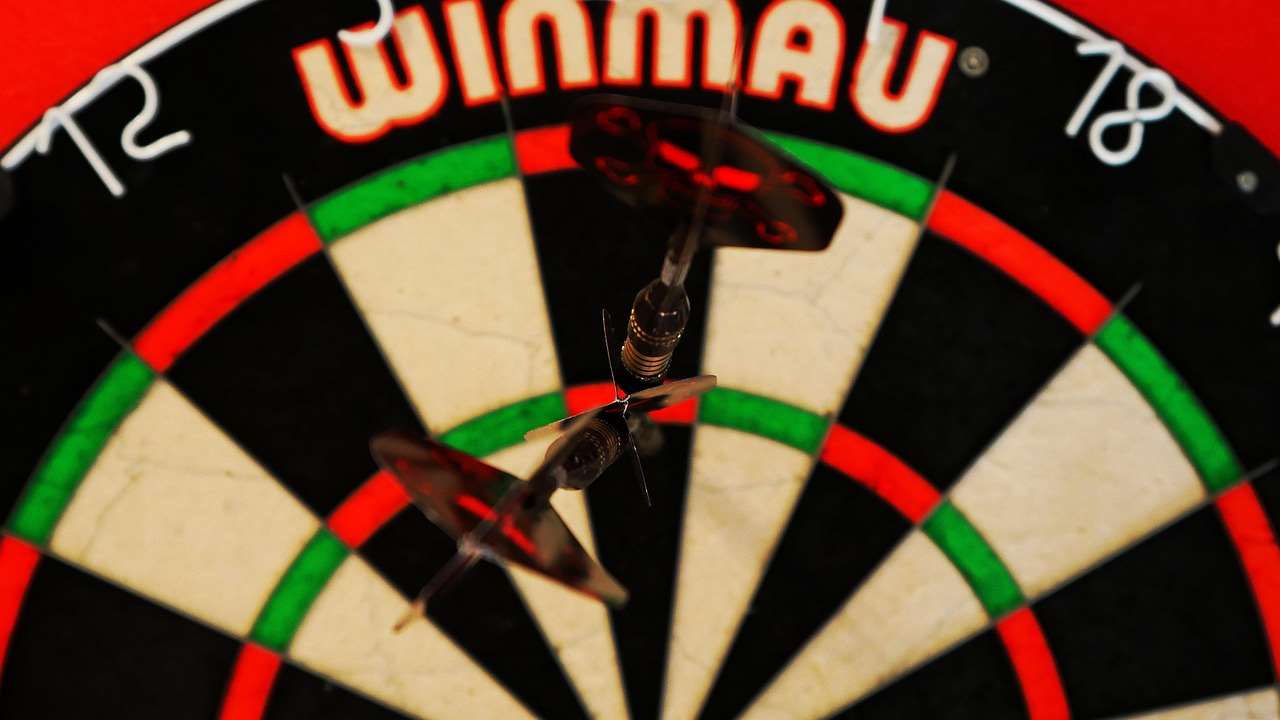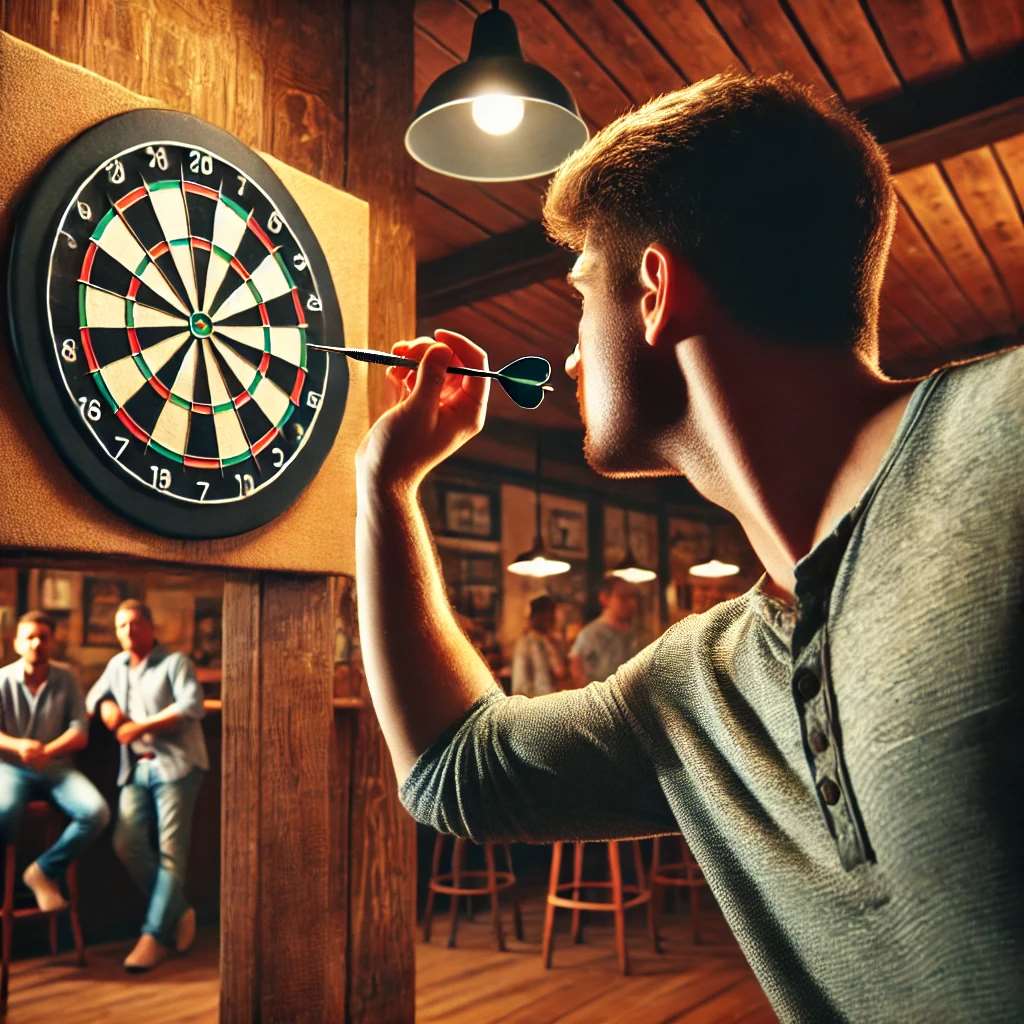In darts, the ‘average’ represents a player’s scoring consistency and provides a clear indication of their overall performance level. This article dives into **understanding ‘average’ in darts terminology**, exploring its calculation, significance, and how it can be used to improve your game, covering everything from basic calculations to advanced strategies.
⚠️ Still Using Pen & Paper (or a Chalkboard)?! ⚠️
Step into the future! The Dart Counter App handles all the scoring, suggests checkouts, and tracks your stats automatically. It's easier than you think!
Try the Smart Dart Counter App FREE!Ready for an upgrade? Click above!
Understanding ‘Average’ in Darts Terminology: The Basics
At its core, the **darts average** is simply the total score a player accumulates divided by the number of darts they throw. It provides a single number that reflects their overall scoring ability. For example, if a player scores 500 points in 15 darts, their average would be 33.33.
While a simple calculation, the average becomes crucial for comparing players and tracking progress. A higher average generally indicates a more skilled and consistent player. Remember that **understanding ‘average’ in darts terminology** is crucial to analyzing your performance and gauging your skill.
The average is primarily used in games like 501 and 301, where the goal is to reach zero. The higher your average, the faster you can theoretically finish the game.

Calculating Your Darts Average
Calculating your darts average is straightforward, but there are a few nuances to consider:
- Online Darts Calculators: Many online tools can automatically calculate your average. Simply input your scores after each leg or match.
- Manual Calculation: The basic formula is: Total Score / Number of Darts Thrown = Average. Keep track of your scores and darts thrown using a scorecard.
- Per Leg or Per Match: You can calculate your average for a single leg of darts, a full match, or even across multiple matches to track your overall consistency.
- Include Busts?: Some players choose to exclude “busts” (scores that take you below zero or to one when trying to finish) from the calculation, while others include them. Consistency in your method is key.
Whether you use a calculator or do it manually, **accurately calculating your average** is the first step in understanding and improving your game. You can also adapt the Adapting darts rules for beginners and then measure your progress.
Example Calculation
Let’s say in one leg of 501, you score the following in nine darts:
- 60
- 45
- 81
- 100
- 60
- 58
- 41
- 22
- 34
The total score is 501 (60+45+81+100+60+58+41+22+34 = 501). Your average for that leg is 55.67 (501 / 9 = 55.67).
Why is the Darts Average Important?
The darts average serves as a crucial metric for several reasons:
- Performance Tracking: It allows you to monitor your progress over time. Are you consistently improving your average? This indicates that your practice is paying off.
- Comparison: You can compare your average to other players to gauge your relative skill level. This is especially useful in competitive leagues or tournaments.
- Identifying Weaknesses: Analyzing your averages in different phases of the game (e.g., opening scores vs. finishing doubles) can highlight areas where you need to focus your practice.
- Setting Goals: Having a target average can provide motivation and direction for your practice sessions.
A focus on improving your darts average often translates to more consistent scoring and faster game finishes.

Factors Affecting Your Darts Average
Numerous factors can influence your darts average, both positively and negatively. **Understanding these factors** is key to optimizing your performance:
- Throwing Technique: Consistency in your stance, grip, and release is paramount. Small variations can significantly impact your accuracy. Consider reviewing Basic Darts Fundamentals for Beginners.
- Mental Game: Pressure, anxiety, and lack of focus can all lead to poor shot selection and inconsistent throws.
- Equipment: The weight, balance, and grip of your darts can impact your comfort and control. Experiment to find the right darts for you.
- Practice: Regular, focused practice is essential for developing muscle memory and improving your overall consistency.
- Physical Condition: Fatigue, lack of sleep, and poor diet can negatively impact your coordination and focus.
- Opponent: Playing against a strong opponent can sometimes raise your game, while playing against a weaker opponent might lead to complacency.
Target Averages for Different Skill Levels
While individual goals vary, here’s a general guide to typical average ranges for different skill levels:
- Beginner: Below 40
- Intermediate: 40-60
- Advanced: 60-80
- Professional: 80+
Remember that these are just general guidelines. Don’t be discouraged if your average doesn’t immediately fall within these ranges. Focus on **consistent improvement** rather than comparing yourself to others.
Strategies to Improve Your Darts Average
Improving your darts average requires a combination of focused practice, strategic thinking, and mental fortitude:
- Focus on Scoring: Prioritize hitting trebles, especially the treble 20. The treble 20 is your best friend.
- Double Practice: Consistently hitting your doubles is crucial for finishing legs quickly. Dedicate a significant portion of your practice time to double practice.
- Checkout Routines: Develop standard checkout routines for common scores. Knowing exactly which numbers to target will save you valuable thinking time.
- Analyze Your Game: Regularly review your performance data to identify areas where you can improve.
- Visualization: Practice visualizing successful throws before you step up to the oche.
- Stay Relaxed: Tension can negatively impact your throw. Focus on staying calm and relaxed, even under pressure.
By implementing these strategies, you can steadily **increase your darts average** and become a more formidable player. You might also find some use out of Alternative darts rules for home play to mix up your practice and keep things interesting.
Beyond the Simple Average: Other Useful Metrics
While the standard darts average is a valuable metric, several other statistics can provide further insights into your game:
- First 9 Dart Average: This measures your scoring ability in the crucial opening stages of a leg.
- Checkout Percentage: This indicates how often you successfully hit your doubles when attempting to finish a leg.
- 180s per Leg: This reflects your maximum scoring potential.
- Highest Checkout: This is simply the highest score you’ve successfully checked out from.
**Analyzing these metrics** in conjunction with your overall average can provide a more comprehensive understanding of your strengths and weaknesses. Using these metrics alongside **understanding ‘average’ in darts terminology** can allow for advanced analysis.

The Psychological Impact of Average
Your darts average can have a significant psychological impact, both positive and negative:
- Confidence Boost: A consistently high average can boost your confidence and make you a more formidable opponent.
- Pressure to Perform: Conversely, knowing your average can create pressure to maintain or exceed that level, which can lead to anxiety and poor performance.
- Self-Esteem: It’s important to remember that your darts average is just one metric. Don’t let it define your self-worth or enjoyment of the game.
**Maintaining a healthy perspective** on your average is crucial. Focus on the process of improvement rather than fixating on the number itself.
Applying ‘Average’ to Different Darts Games
**Understanding ‘average’ in darts terminology** applies to all variants of darts, but it holds slightly different weight and significance based on the rules:
- 501/301: In these games, a high average translates directly into faster finishes. The ultimate goal is to consistently reduce your score with each visit to the board, culminating in a double checkout.
- Cricket: While average isn’t directly calculated in Cricket, your scoring effectiveness can be understood through your points per round and your ability to close out numbers efficiently.
- Round the Clock: Even in simpler practice games like Round the Clock, tracking the number of darts it takes you to complete the game can give you a sense of your overall accuracy and consistency.

Conclusion
**Understanding ‘average’ in darts terminology** is fundamental to tracking your progress, comparing your skills, and identifying areas for improvement. By consistently calculating your average, analyzing the factors that influence it, and implementing strategies to improve it, you can unlock your full potential as a darts player. Remember, darts is a game of precision, mental fortitude, and consistent scoring. Focus on refining your technique, practicing regularly, and maintaining a positive mindset, and your average will naturally improve over time. Now, grab your darts, start practicing, and see how high you can push your average! Consider exploring other resources such as Modifying rules for mixed-level dart players to level the playing field if you’re playing with others.
Hi, I’m Dieter, and I created Dartcounter (Dartcounterapp.com). My motivation wasn’t being a darts expert – quite the opposite! When I first started playing, I loved the game but found keeping accurate scores and tracking stats difficult and distracting.
I figured I couldn’t be the only one struggling with this. So, I decided to build a solution: an easy-to-use application that everyone, no matter their experience level, could use to manage scoring effortlessly.
My goal for Dartcounter was simple: let the app handle the numbers – the scoring, the averages, the stats, even checkout suggestions – so players could focus purely on their throw and enjoying the game. It began as a way to solve my own beginner’s problem, and I’m thrilled it has grown into a helpful tool for the wider darts community.